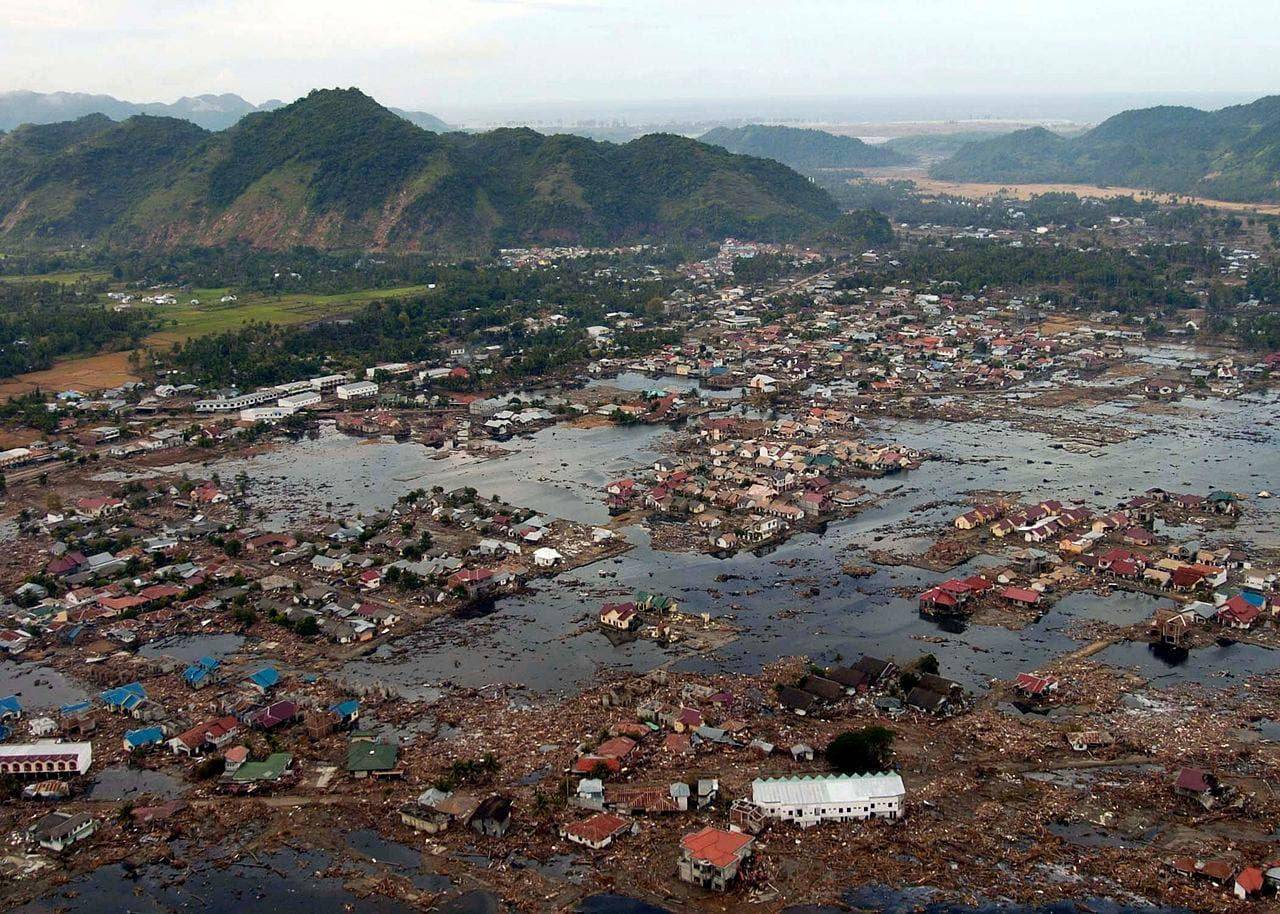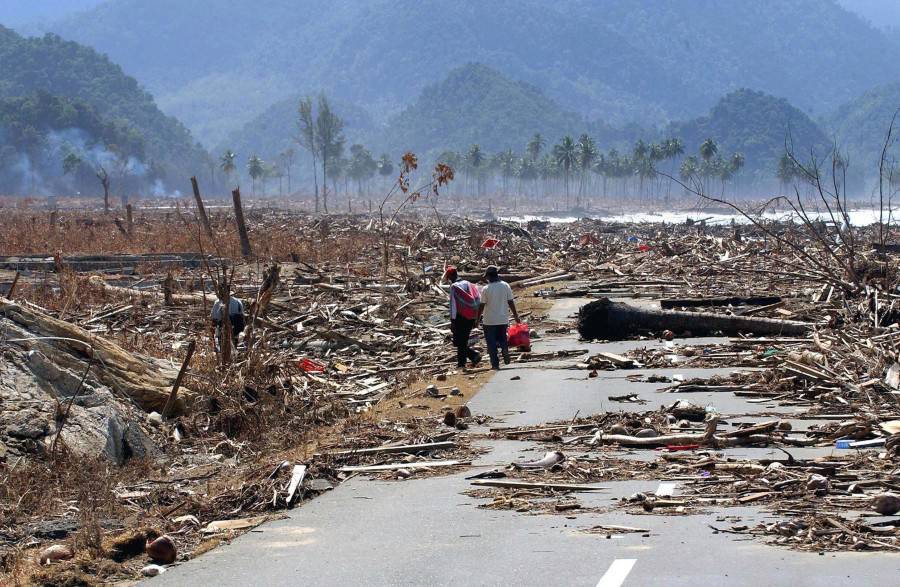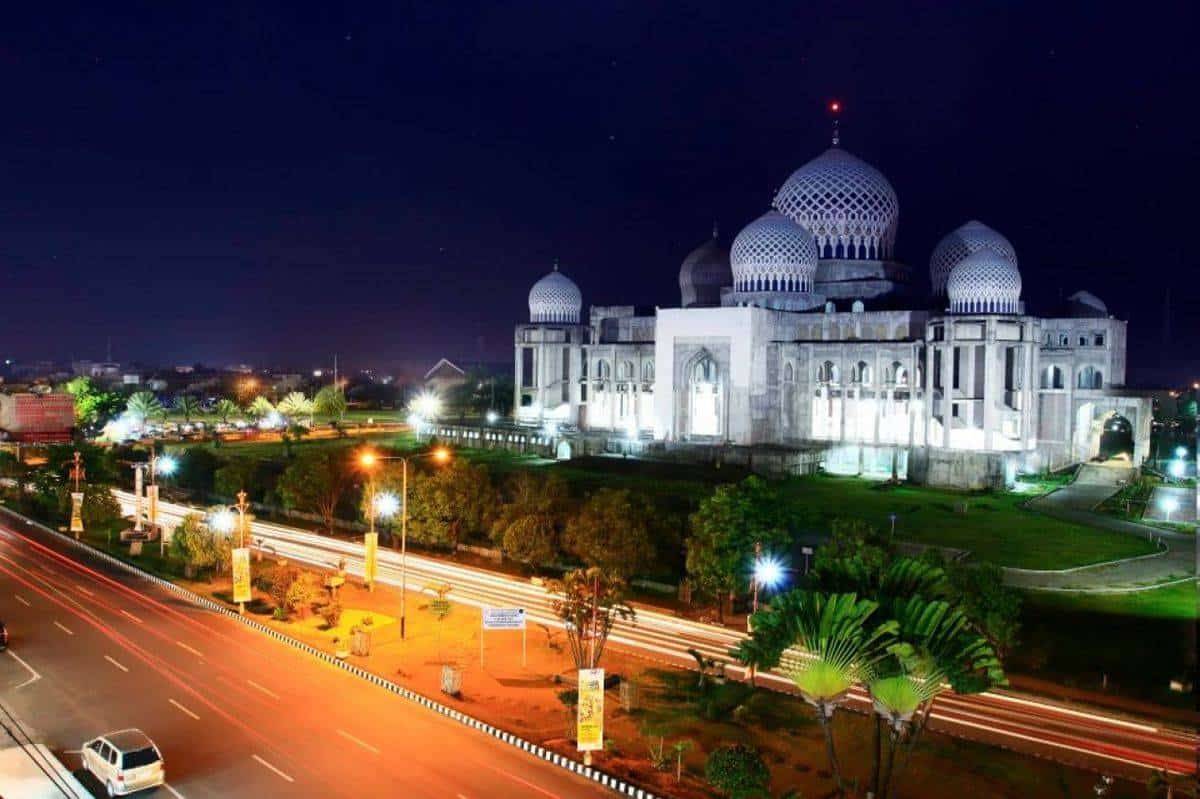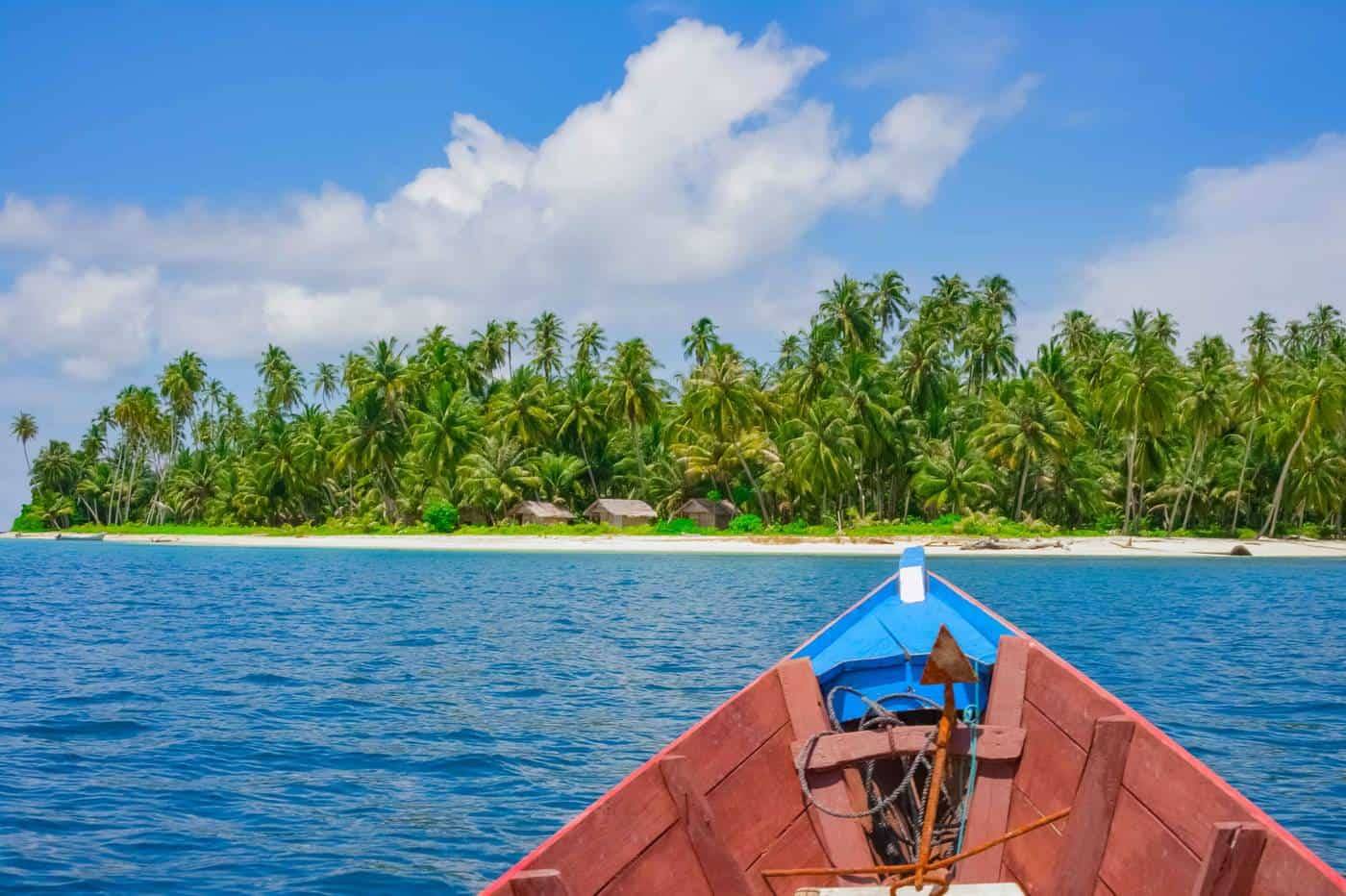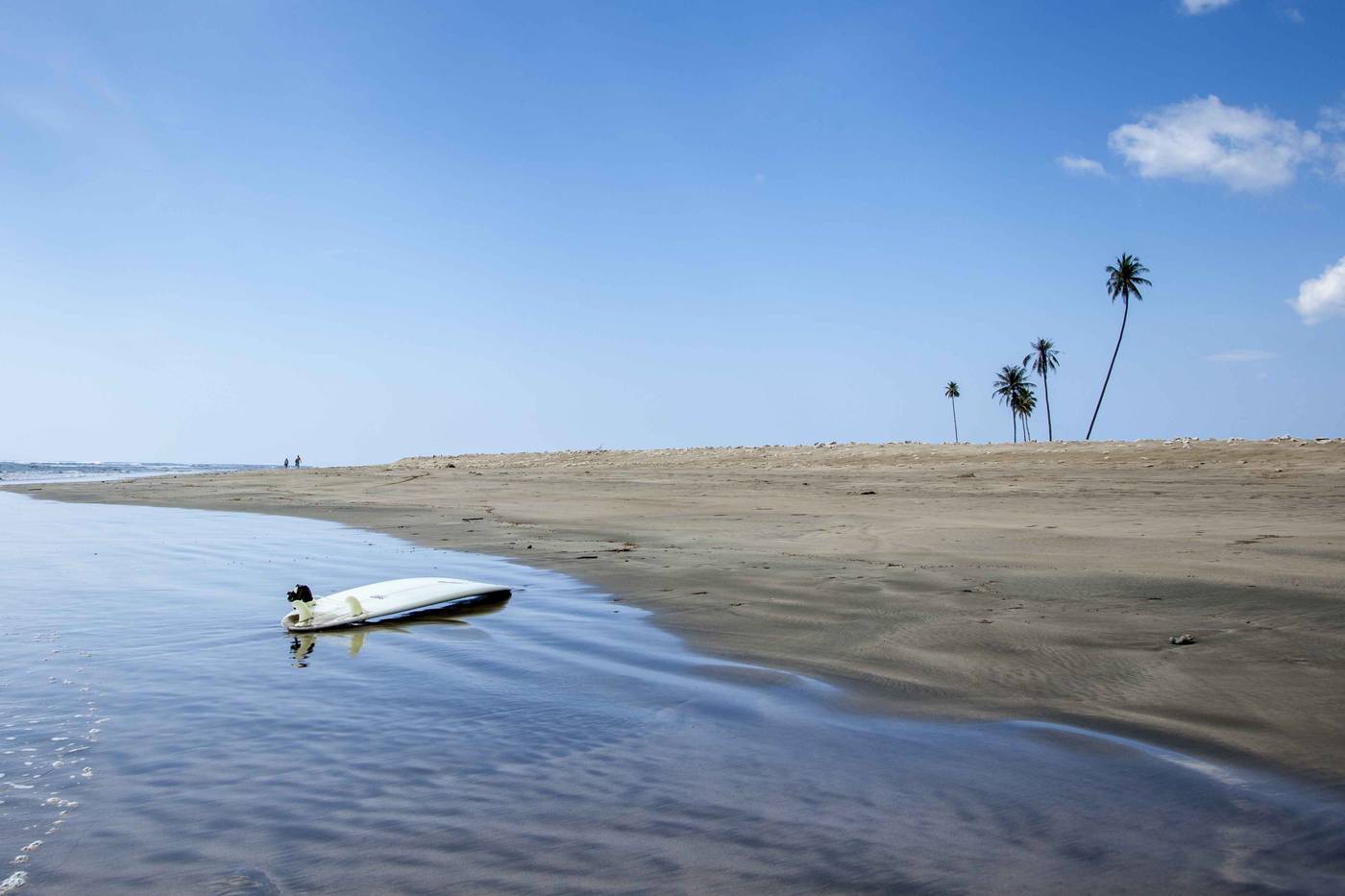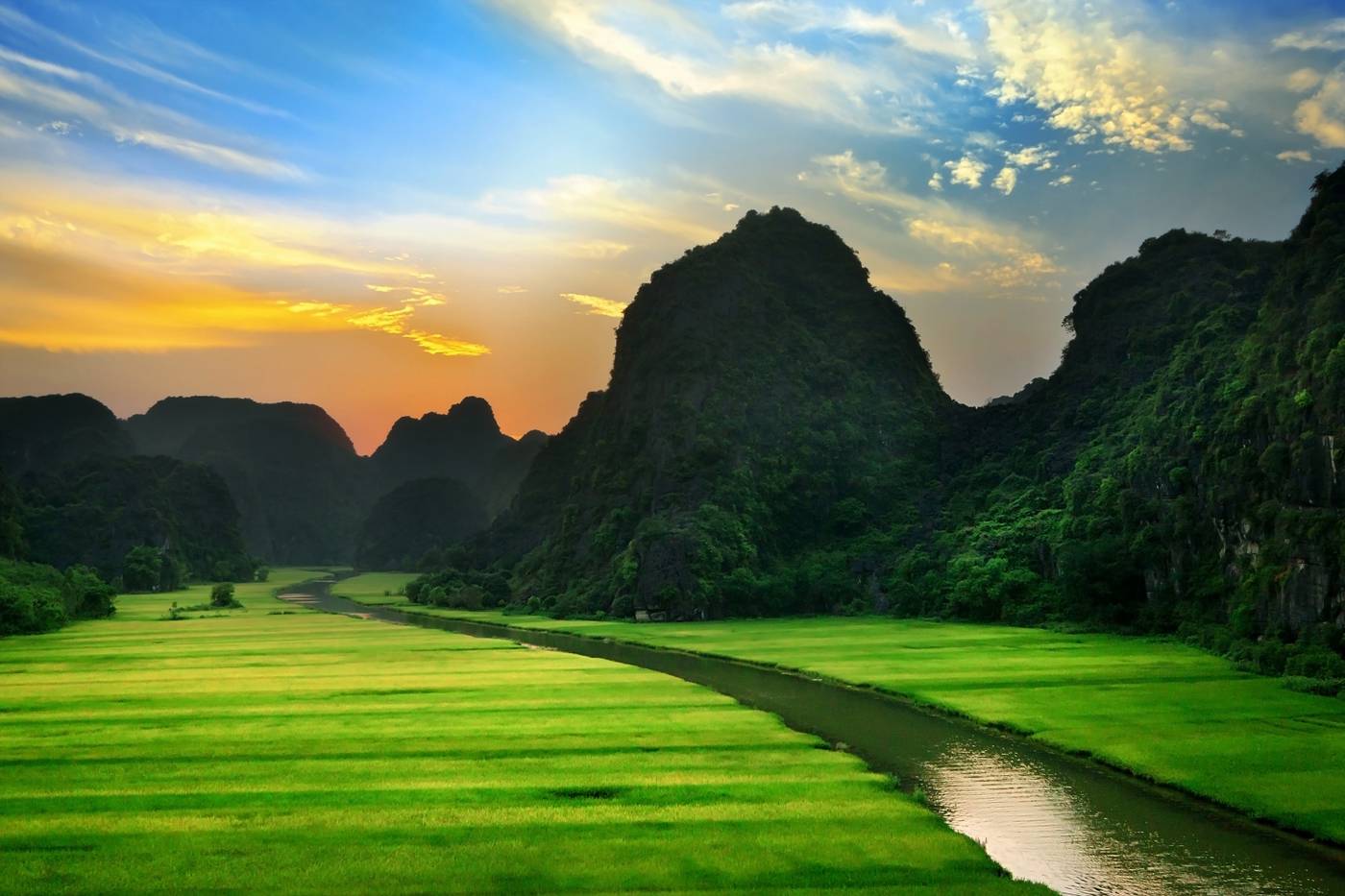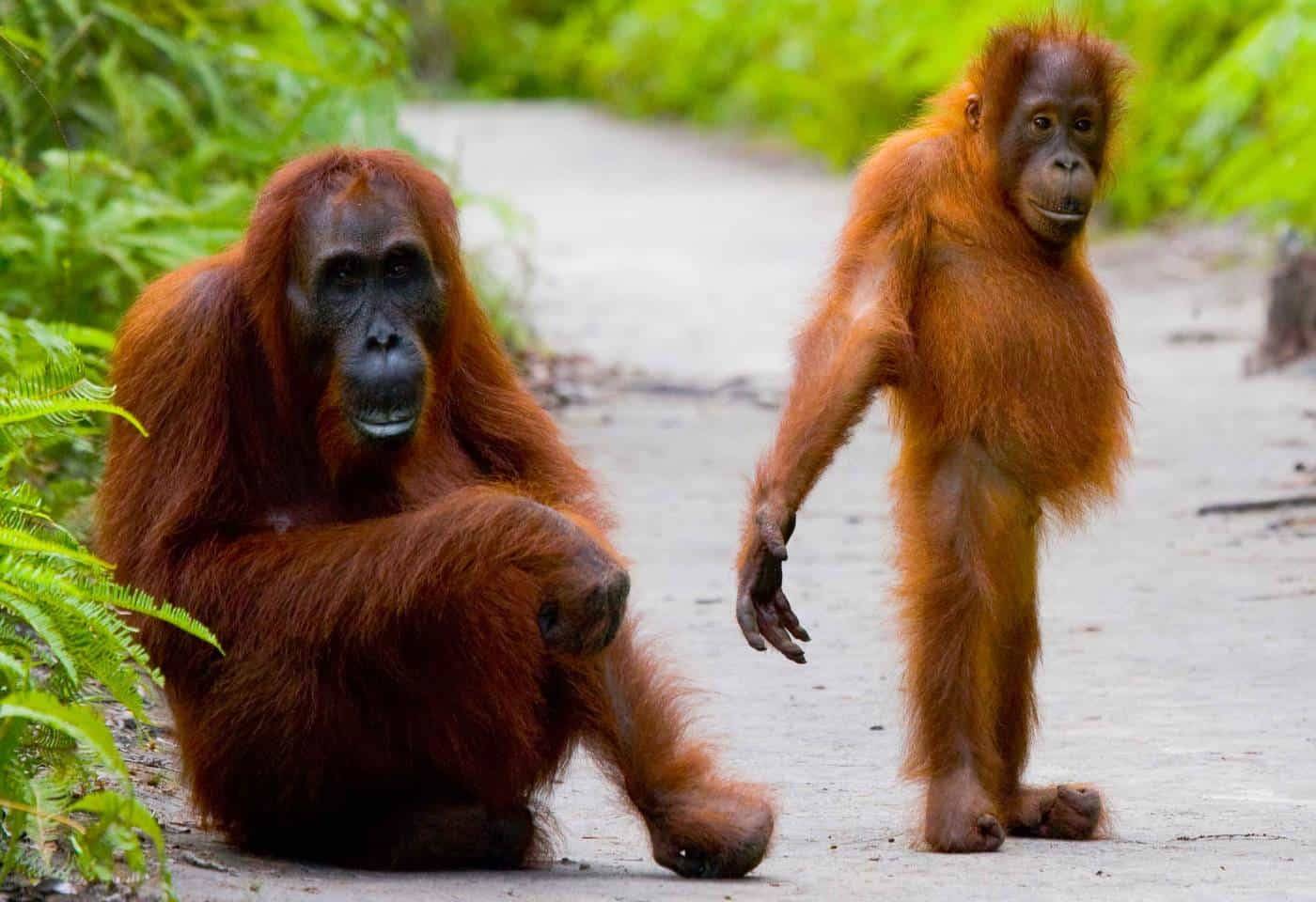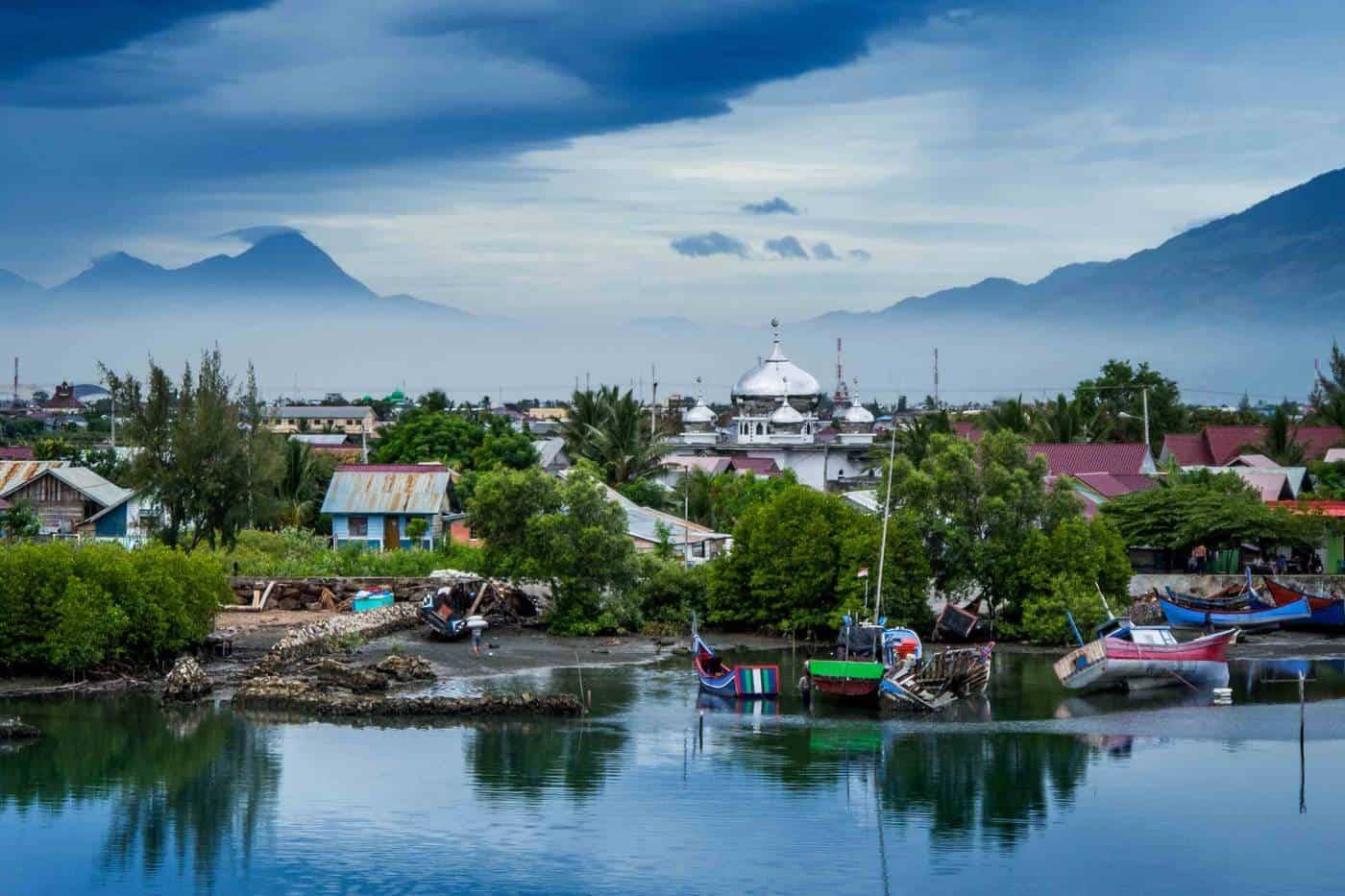
ACEH ‘THE TROUBLED BEAUTY OF SUMATRA’
2004 CHRISTMAS TSUNAMI
The third largest earthquake ever recorded triggered other earthquakes as far as Alaska, calamitous landslides and devastating tsunamis along the coast of the Indian Ocean – India, Sri Lanka and Thailand. And Aceh was the epicentre.
The northern end of Sumatra was once a virgin land, with untouched jungles and bountiful wildlife, including Sumatran Rhino, Sumatran Tiger, Clouded Leopard, Sumatran Elephant and Orangutan.
The natural disaster in 2004 caused the whole eco-system suffered a tremendous loss that can never be fully rehabilitated again. Consequently, tourism in the Aceh province dramatically decreased and today, the region is trying to regain the visitors.
A HISTORY WRITTEN IN BLOOD
The 2004 tsunami was just a ‘cherry on the cake’. A long time before the disaster, Aceh had quite a troubled history due to ongoing fights between the local separatist guerrilla force and the Indonesian government.
Aceh has always been of interest to colonial powers. The Dutch, British and Portuguese used the strategically located Strait of Malacca for shipping and trade. After the infamous Aceh War and bloody colonisation in 1873, the Dutch were replaced by the Japanese and the year-long occupation left much resentment and anger in the former kingdom of Aceh.
For being an outlying territory, outside of the centralised control of Jakarta, Aceh is a conservative Muslim region attached to the long-held tradition. Seeking independence, the local government did everything they could to gain an autonomous status, and the struggle had gone for decades.
The province suffered a great loss during the dictatorship of Suharto (backed up by the US authorities) when the land was hugely exploited and most of its natural wealth (gas and oil reserves were shipped off to Jakarta and USA). This was when a real fury arose, and, for what the Acehnese call “betrayal of the Islamic principles” they stood up against the Javanese colonialism.
In 1898, Free Aceh Movement (GAM) emerged as the local separatist guerrilla force, and the Indonesian military, in response, declared Aceh a free-fire zone. This was when the massacre started; long years of rape, torture and slaughter began, and blood flooded the whole country.
More than 10,000 innocent people were tortured, killed and thrown into mass graves. The severe violation of human rights and illegal executions ended in 1998 with Suharto`s resignation.
After the independence of East Timor in 1999, the Acehnese students pluck up the courage to organise a mass mobilisation in support of a referendum for independence. Indonesian authorities responded in 2001 by granting Aceh`s broader autonomy. Sadly, the previous human right violations have never been addressed.
ACEH TODAY
The Aceh province is already very remote, but the conflicts and extremism only cemented its isolation. Ironically, it was only after the disastrous tsunami in 2004 what forced the locals to make peace with the government and accept some foreign help.
Nevertheless, nature`s resilience is remarkable, and Aceh still takes pride in possessing the largest range of biodiversity in the Asian Pacific. With lots of international aid, Aceh is nowadays, vaguely getting back on its feet. It is mostly volunteers who come here to help. Yet, the travellers who choose to visit the area will encounter some of the most genuine regions in Indonesia. Aceh represents the path least trodden where great natural beauty and adventure awaits around every corner.
BANDA ACEH
Banda Aceh is the capital city and a cultural hub of Aceh. The town has played an important role since the foundation of the Sultanate of Aceh in the 15th century.
Every traveller is encouraged to pay a visit to the Tsunami Museum, and the best way to learn more about the local culture is to see one of the oldest museums of Indonesia – The Aceh Museum.
The astonishing Baiturrahman Grand Mosque is a symbol of the Acehnese people, as it is the only landmark that survived the catastrophic Indian Ocean Tsunami in 2004.
Gunungan Historic Park is a UNESCO World Heritage Site and a present from Sultan Iskandar Muda to his wife – a bathing palace with a beautiful garden.
LHONGA & LAMPUUK
Just a few kilometres away, Lhonga and Lampuuk Beaches are set amid staggering landscapes. While Lhonga offers world-class surf and magnificent sceneries, Lampuuk is a great sunbaking and swimming beach with nice jungle walks.
Both beaches make wonderful escapes from the busy capital of Banda Aceh. There are numerous warungs and guest houses (easy access by public transport or rented scooter).
PULAU WEH
Weh Island is locally known as “Sabang”, which is the name of the largest city on the island. This tiny yet active volcano is the westernmost point of Indonesia, and it is an impressive world-class diving location.
Located in the Andaman Sea the biodiversity here is extraordinary; the marine park is home to the rare megamouth shark, rays and turtles and numerous coral species as well as a large variety of fish.
WHERE TO STAY AND WHAT TO DO ON PULAU WEH
- Anoi Itam Beach – volcanic, black sandy beach near Balohan Port (snorkelling)
- Gapang Beach – a popular backpacker area near Sabang with warungs and dive centres (scuba diving)
- Iboih Beach – the busiest beach in Weh Island with white sandy beach and the Rubiah Island just offshore, it is another popular backpacker spot (snorkelling & diving)
LHOKSEUMAWE
Lhokseumawe is the second most important city of the province and lucky enough, it is located on the east coast of Sumatra which saved it from the monstrous tsunami. The iconic Islamic Centre at the heart of the city and Seumadu Island with its paradisiacal Ujong Blang Beach are Lhokseumawe`s major attractions.
GAYO HIGHLANDS
Takengon is the best-hidden secret of Aceh. Up in the Gayo Highlands, coffee plantations and traditional fishing villages at Takengon decorate Laut Tawar Lake.
The lake is set amidst scenic landscapes and slowly developing tourism infrastructure promises more Western visitors in the future. Jungle trekking, volcano climbing and eco-tourism are the highlights for most of the visitors.
GUNUNG LEUSER NATIONAL PARK
In 2003, just before the devastating tsunami, Aceh and North Sumatra were struck by another disaster – an enormous flash flood that had a huge impact on the environment and tourism industry. Hundreds of people died, and the World Heritage Site of Gunung Leuser National Park suffered great loss.
Today, the nature reserve is rebuilt and open to the public, and for being recorded to be the largest wilderness area in Southeast Asia, the area offers exceptional trekking and eco-tourism opportunities.
HOW TO GET TO GUNUNG LEUSER NATIONAL PARK
There are two entry points to the national park: 1. Medan in North Sumatra (Bukit Lawang is the largest animal sanctuary of Sumatran Orangutan) and 2. Ketambe in Aceh.
The easiest access is from Medan, but also the busiest and quite pricey. Adventurers and budget travellers will prefer to take the western entrance albeit it takes some efforts to get to the town of Ketambe. Here, rhinos, tigers, leopards, elephants and orangutans can be spotted in their natural habitat.
Gunung Leuser National Park is stretching across 150 km of the jungly Barisan mountain range, with the highest peaks Tanpa Nama (3,466 m), Mount Loser (3,404 m) and Mount Leuser (3,119 m).
SIMEULUE & BANYAK ISLANDS
Increasingly popular surfing charter destination – Simeulue and Banyak archipelagos stretch along Aceh`s southernmost shores, almost at the border with North Sumatra.
Not far from the Nias and Mentawai Islands, a series of more than 70 tropical isles presents unspoiled nature, terrific swells and excellent surfing beaches.
NOTE Whereas Banyak is close to the mainland Simeulue is rather a far-flung corner of Sumatra. Both archipelagos have nice surf camps and eco-resorts.
Banyak Islands: the most popular and best accessible surf locations are Balai and Palembang, with good facilities but also Tailana and Sikandang are slowly opening to tourism.
Simeulue Islands: most of the surf camps are situated south of the airport Bandara Lasikin.
TO GET THERE: There are regular public boats but also speedboats departing from Singkil to both archipelagos (Simeulue also has an airport), and the surfers can even bring their scooter that can be rented in the mainland (4 hr trip). NOTE The islands are less developed, most of which have little infrastructure and there is no ATM (hence you will need to have enough cash or book an all-inclusive trip)
ESSENTIAL EXPERIENCES IN ACEH (BRIEF SUMMARY)
- Banda Aceh – visit the capital of Aceh and its moving Tsunami Museum and astonishing Baiturrahman Grand Mosque Mosque
- Pulau Weh Island – do not miss out on the popular Sumatran diving and snorkelling site in Sabang
- Lhoknga and Lampuuk – catch a wave at these stunning world-class surfing beaches
- Seumadu Island/Ujong Blang Beach – have a lazy day on one of the top beaches in Sumatra
- Ketambe – spend a few days in the Gunung Leuser National Park and admire the exceptional tropical rainforest heritage of Sumatra and its fascinating wildlife
- Takengon – climb one of the surrounding volcanoes, towering over the Danau Laut Tawar and take a walk around the lake
- Simeulue & Banyak Islands – outstanding surfing beaches and untouched nature (off the beaten track)
USEFUL TRAVEL TIPS
Religion – Sumatra is strictly a Muslim Realm, and conservative dress is expected at all times, especially women. Female travellers occasionally reported feeling extremely uncomfortable at some places, e.g. tried to be touched by the locals due to their skin colour or bright hair, been subject to loud mockery for their “lack of clothing” and so forth. Be aware of the fact that many residents might have never seen a person of a Caucasian race and are not familiar with the “Western fashion”.
Health – There is a high risk of Malaria in Sumatra, particularly during the rainy season (Dec-Feb). Vaccinations such as Hepatitis A, B and Tetanus are recommended. In some cases, the Yellow Fever Immunisation is required (check with your national health policies).
Transport – The only way how to get around Sumatra is using local public transport/buses (angkot, labi-labi). However, this can often be a gruelling experience – distances are huge, the roads tortuous and the driving hair-raising. On the other hand, it is part of the Sumatran travel adventure. To move around locally, the best way is either to hire an ojek, becak or bendi or rent your own scooter/bicycle (depending on the destination).
WHEN TO TRAVEL
The ideal time to travel to Aceh is between June and September during the dry season.
HOW TO GET THERE
Fly to Medan or Banda Aceh (via Penang, Kuala Lumpur or Jakarta)
For all international flights go to www.momondo.com or www.skyscanner.com
For all domestic Indonesian flights check out www.garuda-indonesia.com


